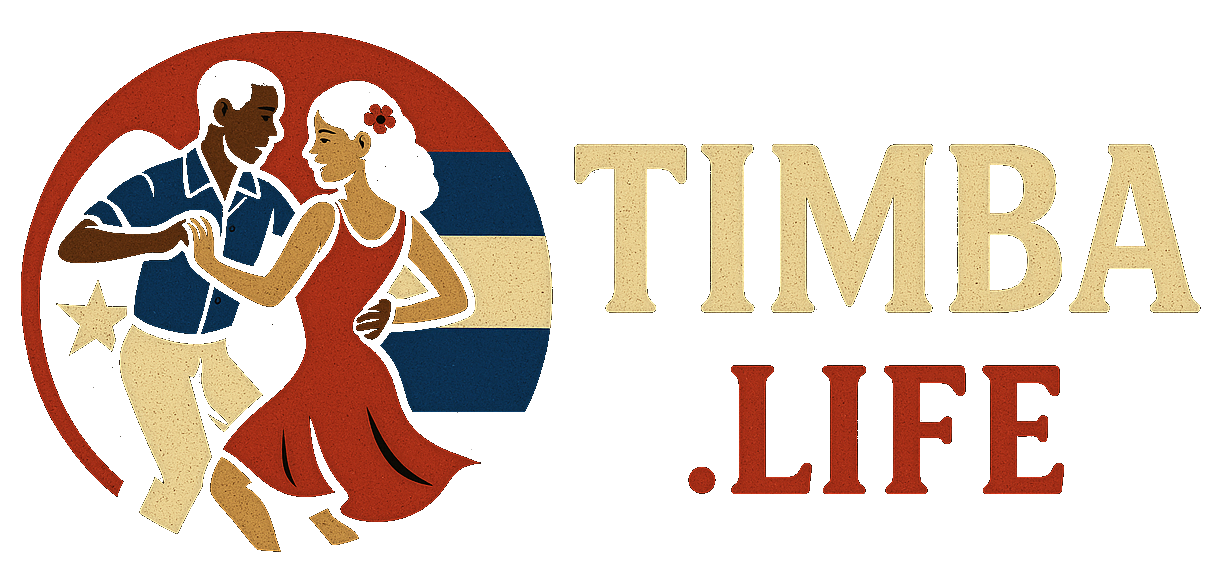Montuno
Dit gedeelte wordt gekenmerkt door een meer open en interactief deel van het lied, waar er een dialoog is tussen de zang en de instrumentalisten, wat leidt tot een meer geïmproviseerd gevoel. De montuno is typisch gebouwd op repetitieve piano- en baspatronen en kan call-and-response zang bevatten.
Marchas in het Montuno-gedeelte
| Deel van Montuno |
Label |
Beschrijving |
| Begin van Montuno |
Marcha Abajo |
Groove begint, coro komt binnen, energie is laag |
| Midden/Hoogtepunt van Montuno |
Marcha Arriba |
Pregón drijft intensiteit, energie stijgt |
| Terugkeer naar Coro |
Marcha Abajo |
Energie daalt iets, groove reset |
 montuno/timba-montuno.png" />
montuno/timba-montuno.png" />
[INTRO]
- Vaak 4–16 maten
- Kan een thematisch motief bevatten (instrumentaal of met coro)
- Soms direct een korte break of stop-time
[CUERPO / VERSO]
- Lead vocal (versregels)
- Relatief stabiele groove
- Vaak 2–3 keer herhalen met kleine variaties
[TRANSITION → MONTUNO]
- Break, gear change of sudden drop
- Piano kan overschakelen naar eerste tumbao
[MONTUNO RONDE 1]
- Coro 1 + Pregón 1
- Marcha abajo: bas dunner, percussion meer lucht
- Mogelijke gear changes">gear changes (bijv. naar songo of funk-groove)
- Eventueel korte blokken tussen pregones
[MONTUNO RONDE 2]
- Coro 2 + Pregón 2
- Marcha arriba: volle band, meer koper, hogere intensiteit
- Extra gear changes">gear changes:
- Baspatroon wisselt
- Drumset naar timbales of vice versa
- Meerdere “call and response” cycli
[MAMBO / BLOQUES]
- Gecomponeerde tutti riffs
- Syncopische accenten
- Kunnen elk moment inspringen om energie te sturen
[MONTUNO RONDE 3 (OPTIONEEL)]
- Terug naar Coro 1 of nieuw Coro 3
- Afwisselen tussen marcha abajo ↔ marcha arriba
- Meer improvisatie
[CODA / DESPEDIDA]
- Herhalen van een coro of riff tot fade / staccato einde
- Soms nog 1–2 plotselinge breaks of gear changes">gear changes
- Vaak dramatisch afsluiten (“¡Se acabó!”)
- Coro = het Koor, zingt een herhalende frase.
- pregón">Pregón = de leadzanger zingt variërende of geïmproviseerde lijnen
Lees meer >
- Coro = het Koor, zingt een herhalende frase.
- Pregón = de leadzanger zingt variërende of geïmproviseerde lijnen
Lees meer >Outro (Coda)
The conclusion of the song, which often mirrors the intro">intro or brings the song to a close with a final statement by the band.
intro">
Introducción
This is the opening section of the song, which sets the mood and intro">introduces the musical motifs.
It often features a horn section and can include elements from the song's main themes.
intro">
Introducción
This is the opening section of the song, which sets the mood and introduces the musical motifs.
It often features a horn section and can include elements from the song's main themes.
Outro (Coda)
The conclusion of the song, which often mirrors the intro">intro or brings the song to a close with a final statement by the band.
intro">
Introducción
This is the opening section of the song, which sets the mood and intro">introduces the musical motifs.
It often features a horn section and can include elements from the song's main themes.
intro">
Introducción
This is the opening section of the song, which sets the mood and introduces the musical motifs.
It often features a horn section and can include elements from the song's main themes.
Introducción
This is the opening section of the song, which sets the mood and introduces the musical motifs.
It often features a horn section and can include elements from the song's main themes.
Introducción
This is the opening section of the song, which sets the mood and introduces the musical motifs.
It often features a horn section and can include elements from the song's main themes.
Dit gedeelte wordt gekenmerkt door een meer open en interactief deel van het lied, waar er een dialoog is tussen de zang en de instrumentalisten, wat leidt tot een meer geïmproviseerd gevoel. De montuno is typisch gebouwd op repetitieve piano- en baspatronen en kan call-and-response zang bevatten.
Lees meer >bloques
Rhythmic breaks or unison hits played by the whole band, often interrupting the flow to create surprise and tension. These are choreographed and add drama, excitement, and syncopation.
The terms "marcha abajo">marcha abajo" and "marcha arriba" describe different energy levels or sections within the montuno.
Lees meer >gear changes">
Versnellingsveranderingen, of "cambios de marcha," in Timba zijn bijzonder opwindende elementen die bijdragen aan de dynamiek en energie van het genre. Deze veranderingen zijn in wezen verschuivingen in ritme, tempo, of zelfs in de textuur van de muziek die opwinding injecteren en vaak reacties op de dansvloer aanmoedigen. Ze worden strategisch gebruikt gedurende een lied om spanning en ontspanning te creëren, het publiek betrokken te houden, en de veelzijdigheid en creativiteit van de muzikanten te benadrukken.
Lees meer >Versnellingsveranderingen, of "cambios de marcha," in Timba zijn bijzonder opwindende elementen die bijdragen aan de dynamiek en energie van het genre. Deze veranderingen zijn in wezen verschuivingen in ritme, tempo, of zelfs in de textuur van de muziek die opwinding injecteren en vaak reacties op de dansvloer aanmoedigen. Ze worden strategisch gebruikt gedurende een lied om spanning en ontspanning te creëren, het publiek betrokken te houden, en de veelzijdigheid en creativiteit van de muzikanten te benadrukken.
Lees meer >Mambo
In Cuban music, especially in salsa and son,
the "mambo" section typically refers to a brassy, rhythmically intense instrumental break,
often featuring repetitive horn lines, call-and-response patterns, and building energy toward the climax of a song.
Mambo
In Cuban music, especially in salsa and son,
the "mambo" section typically refers to a brassy, rhythmically intense instrumental break,
often featuring repetitive horn lines, call-and-response patterns, and building energy toward the climax of a song.
The terms "marcha abajo" and "marcha arriba" describe different energy levels or sections within the montuno.
Lees meer >montuno/timba-montuno.png" />
